This follows on from studies of measurement units in Teotihuacan and Chichen Itza
Hugh Harleston jnr found Teotihuacan to be built in measures of
1.059 metres which would be 2 x cubits of 20.85" making one hunab
(compare to 2 x Egyptian Royal cubits of 20.625" making 1 hunab)
Prof Sugiyama proposed a unit of 830 mm for Teotihuacan. This would be a yard of 32.68" and very interestingly
compares to the "megalithic yard" of 32.64" found by Prof A. Thom for the Megalithic Sites in Britain.
Prof Sugiyama quotes a study by Drewitt (1969, 1987) and Drucker (1971,1974, 1977's)
which found a unit of 805 mm (31.692").
The Sumerian basic units were a "shusi" of 0.66", link of 12 shusi (7.92"), foot of 20 shusi (13.2")
cubit of 30 shusi
(19.8"), yard of 50 shusi (33.0") and double yard of 100 shusi (66.0").
For larger distances, the pole of 16.5 feet (15 Sumerian feet) was used, along with a chain of 66 feet
(60 Sumerian feet which was 100 links) and furlong of 660 feet (600 Sumerian feet).
Looking back to Drewitt and Druckers figure of 805 mm (31.692") we can readily see that
in place of a
yard of 50 shusi,they have
been calculating in yards of 48 shusi (4 x links) since 48 x 0.66" = 31.68" = 804.7 mm
and their study in itself
provides evidence of the use of "Sumerian" measurement units at Teotihuacan.
This study looks at the citadel for evidence of "Sumerian" units, but in actual fact, it seems that "Sumerian", "Egyptian" and "Mayan" units
are all based on the same measurement foundation, a plot of 100 x 100 "Sumerian" cubits which when divided by 100, 96 or 48 gives "Sumerian", Egyptian" or Mayan" units respectively.
Some examples of measurements at the Citadel in Sumerian feet are given below.
From the satellite images, the complex appears to measure 1200 Sumerian feet by 1150 Sumerian feet.
Although there are many instances of multiples of 100 Sumerian feet suggestng a grid of 100 Sumerian
feet was used in the planning, the odd shape of 1200 x 1150 Sumerian feet suggests it was planned on a grid of 50 Sumerian feet.
A unit of 50 Sumerian feet of 13.2" would be 20 Sumerian yards of 50 shusi, or 10 double yards
of 100 shusi, or simply, 1,000 Sumerian shusi of 0.66". It would also be 32 Egyptian royal cubits of 20.625"
or 16 Mayan hunabs of 41.25".
Surprisingly it also means that 32 Egyptian royal cubits were equal to 1,000 Sumerian shusi, seeming
to confirm that all the above measurements although attributed to varying countries as far apart as
Sumeria, Egypt and Mexico, were originally part of a unified system as seen at Teotihuacan.
References
Chichen Itza and El Castillo cubits
Monte Alban cubits measuring units
Tiwanaku calendar
Atlantis Stade
For measured intervals between Altiplano canals,
Teotihuacan measuring unit
Jim Allen, 25 June 2009

An early view of the Citadel, a name given by the Spanish conquistadors (ciudadela)
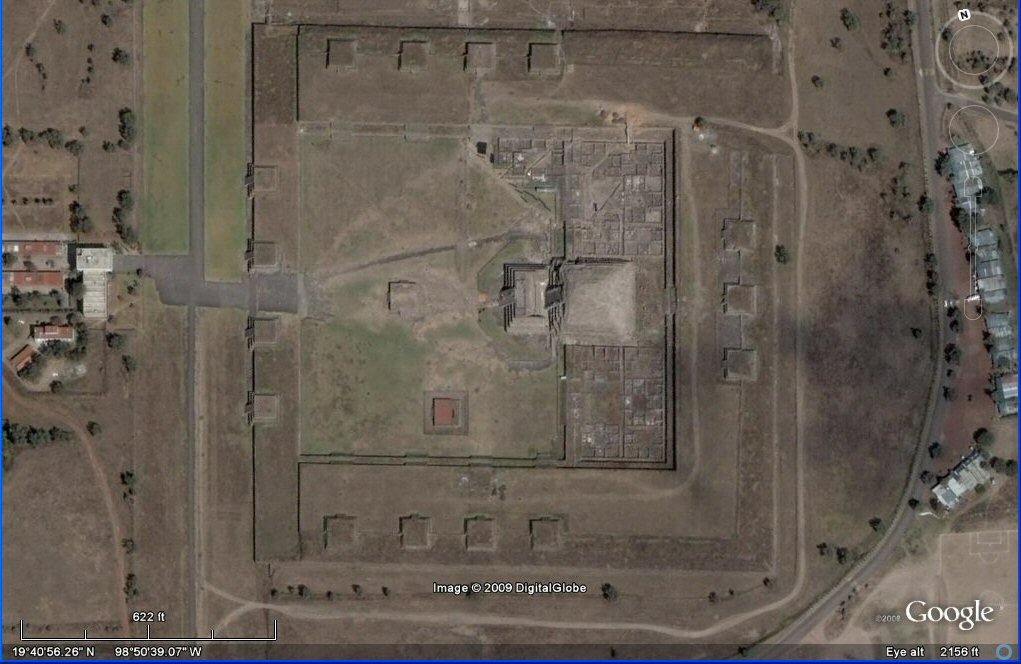
above, the Citadel today from Google Earth.
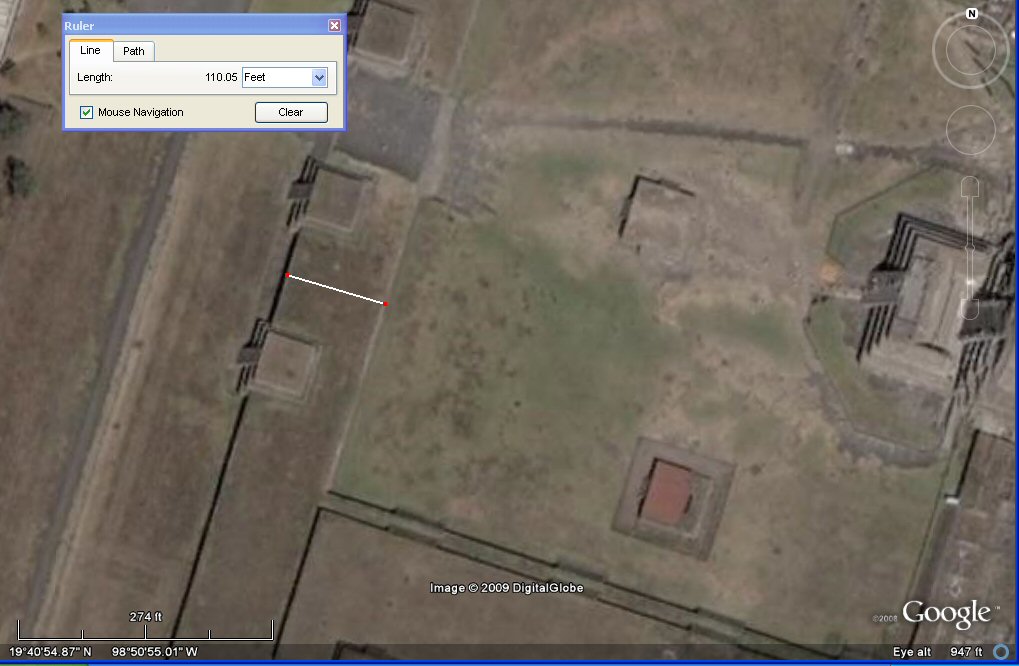
this equals 100 Sumerian feet of 13.2", 40 Sumerian yards of 33.0", 20 Sumerian double yards of 66.0",
or 64 Egyptian royal cubits of 20.62" or 32 Mayan hunabs of 41.25"
.
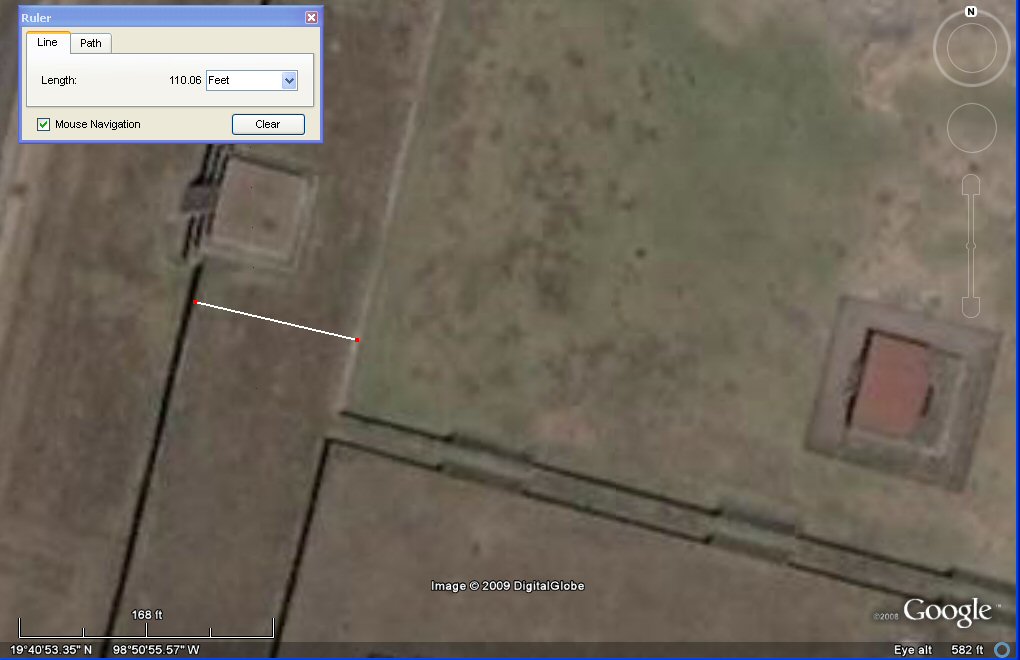
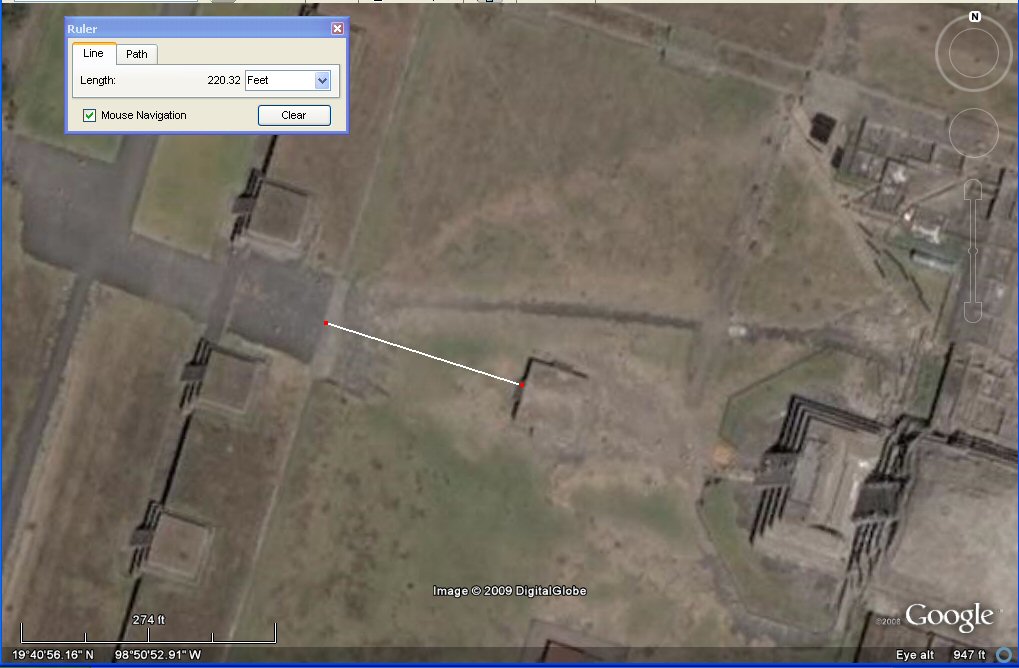
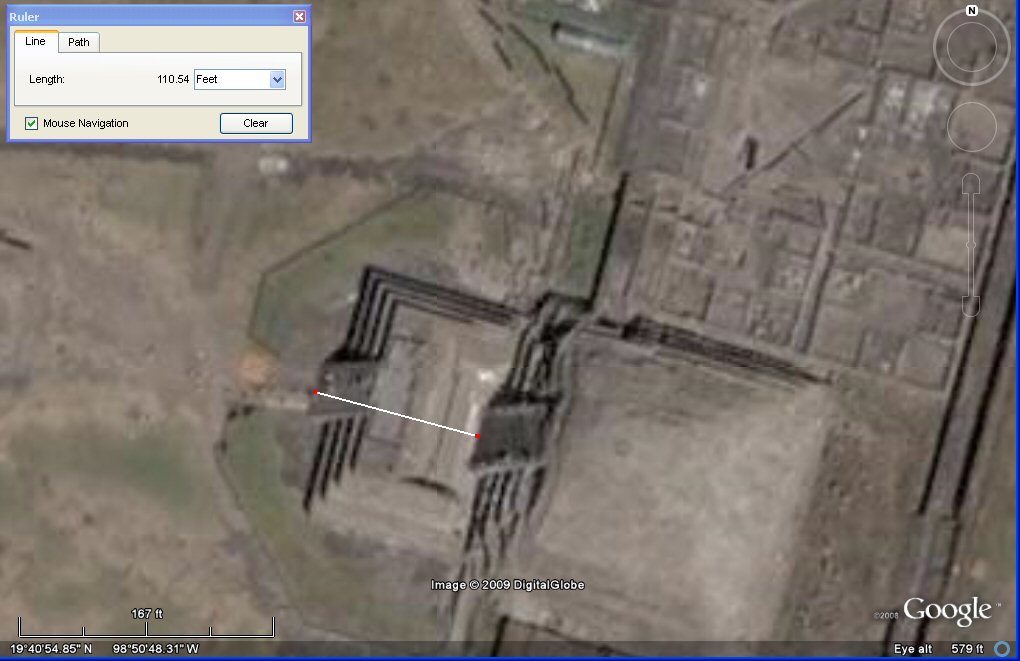

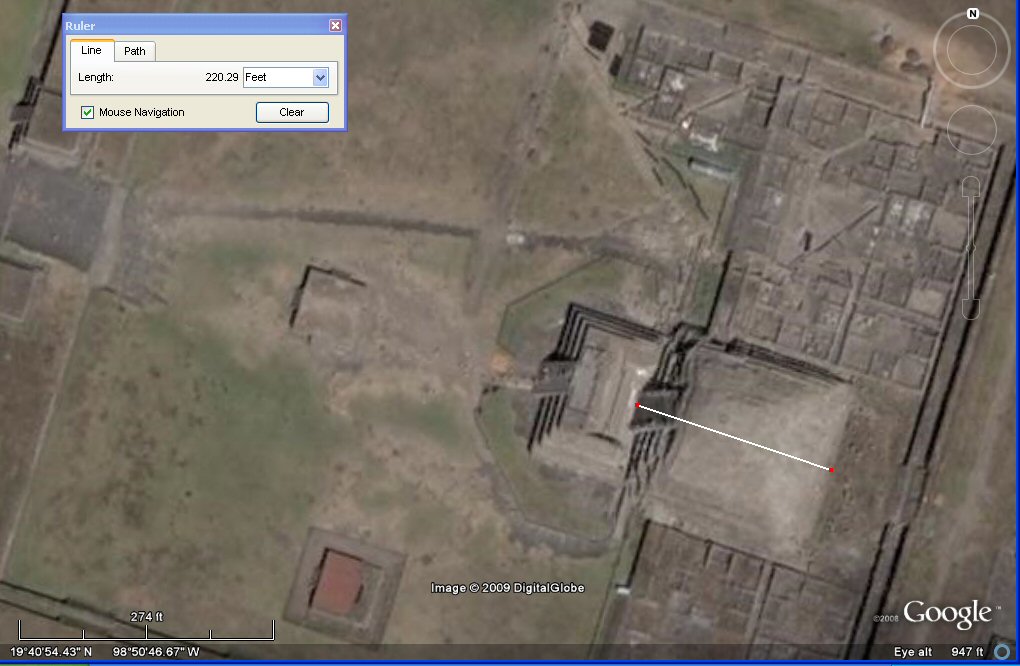
= 200 Sumerian feet of 13.2"

= 100 Sumerian cubits of 19.8" which is also 150 Sumerian feet of 19.8",
60 Sumerian yards of 33.0",
96 Egyptian royal cubits of 20.62" or 48 Mayan hunabs of 41.25".

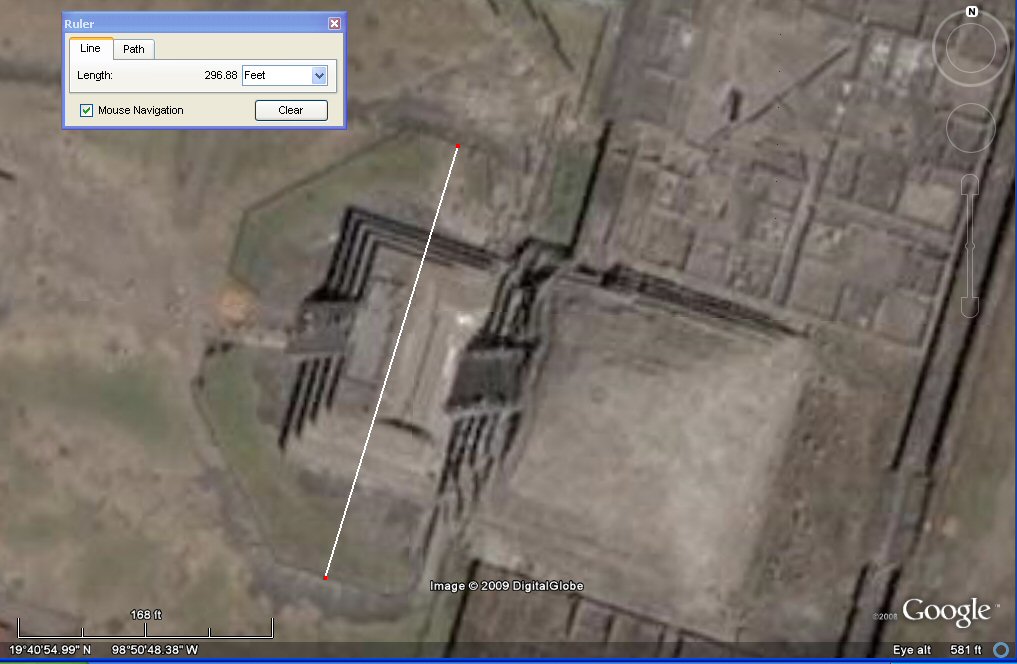

as 66 English feet = 60 Sumerian feet or 40 Sumerian cubits.

= 100 Sumerian cubits of 19.8".

above, the Google Earth photo with units in Sumerian feet imposed.
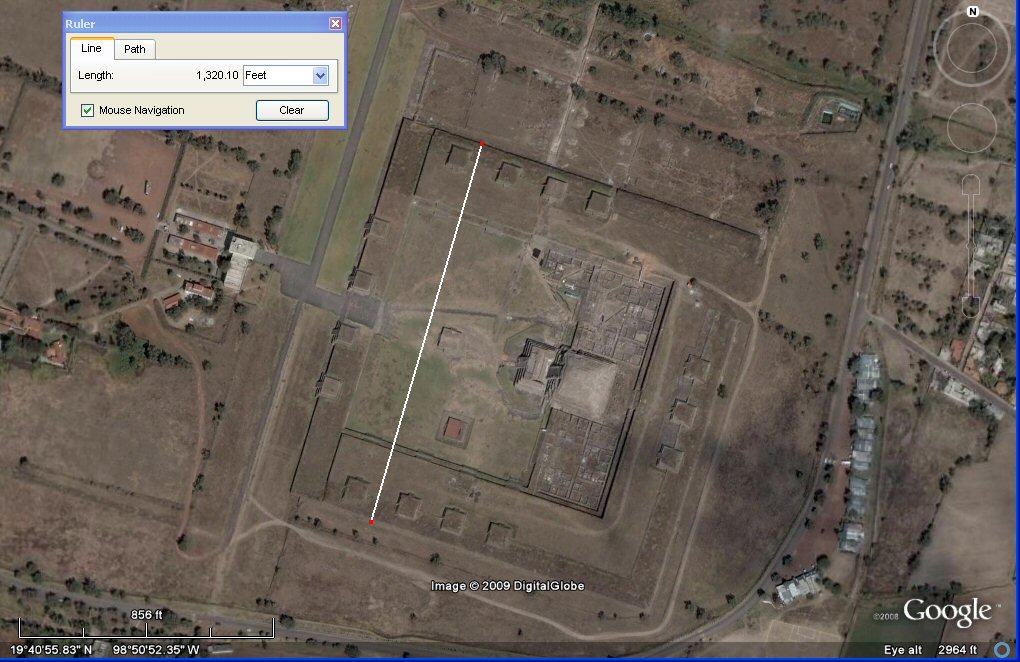
which is 1200 Sumerian feet of 13.2" or 800 Sumerian cubits of 19.8"

above, the Google Earth photo with additional scale bars imposed.

above, the Google Earth photo with scaled grid at 100 Sumerian feet intervals.

above, the Google Earth photo with scaled grid at 50 Sumerian feet intervals.
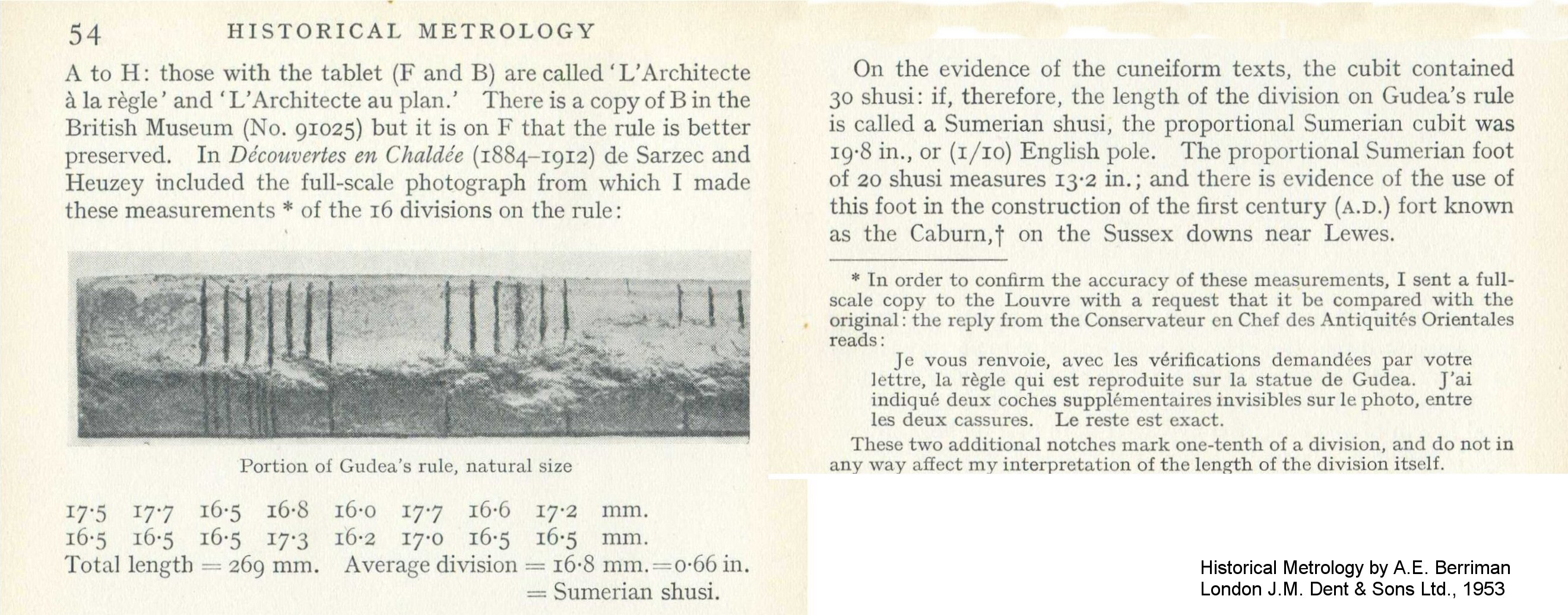
above, a portion of the ruler known as "Gudea's rule" preserved in the Louvre shows intervals in Sumerian "shusi"
of 0.66" which Berriman demonstrated formed 20 to the Sumerian foot of 13.2" and 30 to the Sumerian cubit of 19.8".
50 shusi
made the Sumerian yard of 33.0" and 100 shusi made the Sumerian "double yard".
Berriman A.E. (1953) Historical metrology, J.M. Dent & Sons, London 1953.
Click here for Chichen Itza and El Castillo cubits
Click here for Monte Alban, measuring units
Click here for Tiwanaku calendar
Click here Atlantis Stade
click HERE
Click here for Teotihuacan measuring unit
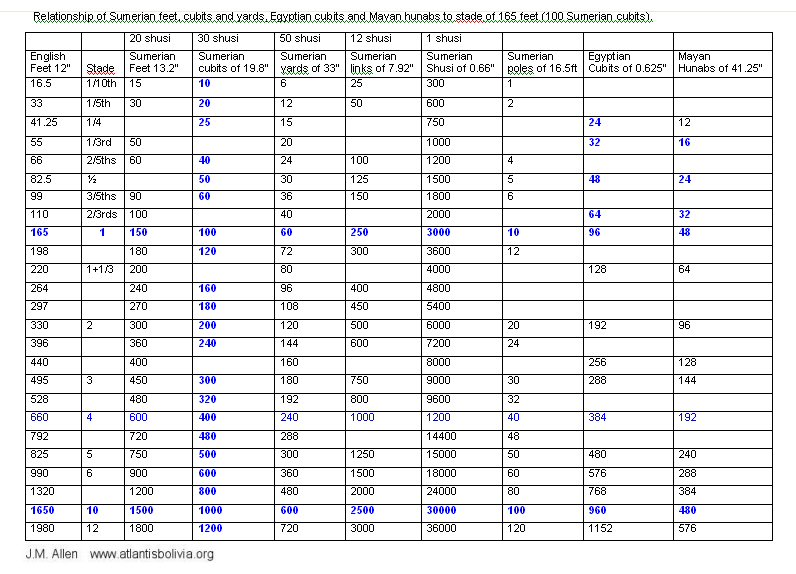
email webatlantis@hotmail.com
